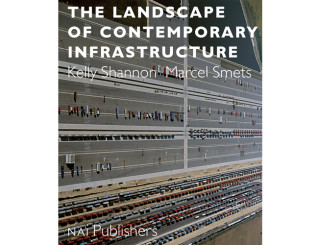
The growing and unmistakable interest in infrastructure calls for a sound overview of recent exemplary design. Across the globe, public authorities view infrastructure—particularly transport infrastructure—as their primary field of investment. In a world where urbanization is increasingly produced by private capital, infrastructure appears as the backbone onto which these building initiatives can be grafted. As such, infrastructural design emerges as one of the last resorts that allow public authorities to give structure to haphazard settlement and reclaim the discipline of urbanism. Furthermore, the importance of mobility and transport is universally recognized. Accessibility lies at the root of development and the infrastructure needed to secure it determines the quality of the environment, both at the global level (by giving access to places and making them part of world economy) and at the local level (by enhancing the dwelling quality of the public realm).
As societies become increasingly urbanized, decision-making and spatial feasibility make infrastructure more and more complex. The radical transformation and creation of landscapes through infrastructure development is a global phenomenon. Large-scale, capital-intensive infrastructure projects are completely transforming urban and rural territories alike. Urban conurbations and settlements are repositioned on the basis of new economies, proximities, and hierarchies, while landscapes and ecologies are radically altered. Yet, growing population density and social improvement have sharpened the resistance against the possibly disruptive interventions of airports, highways, trains, and even waterways in natural landscapes and/or built environments. A well-oiled community design process of forums, task forces, and advisory committees has allowed citizens and action groups opposed to the hindrances provoked by infrastructures to become more relevant and their highly publicized campaigns generally make politicians think twice before committing to projects. The involvement of so many stakeholders, and also the shortage of space and the growing intermodal character of transport solutions, definitely augments the difficulty and complexity of the design problem. Today, the creation of infrastructure can simply no longer be considered as the accumulation of a large object in isolation from its surroundings. Landscape and infrastructure merge and movement corridors are (re)worked as new vessels of collective life. An entire new spectrum of the public realm becomes terrain for investigation. In order to function, fit and be acceptable, infrastructure needs to enhance the quality of the landscape. Hence, conceiving infrastructure blends with generating architecture, building landscapes, and producing urban settings and living environments. It engages social and imaginative dimensions as much as engineering. In that respect, designing transport infrastructure today comes down to making it part of an integrated project. Once married with architecture, mobility, and landscape, infrastructure can more meaningfully integrate territories, reduce marginalization and segregation, and stimulate new forms of interaction. It can then truly become “landscape.”

